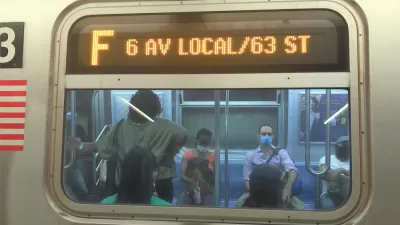President Obama used a tour of Jaxport to promote infrastructure investment, e.g. accommodating larger ships and intermodal cargo transfer to trains to stimulate the economy and increase employment, and maybe convert some Republicans to the cause.
Michael D. Shear, White House correspondent for The New York Times, accompanied President Obama and Transportation Secretary Anthony Foxx on a tour of Jaxport in Jacksonville, Fla on July 25 to promote the president's aggressive infrastructure investment agenda, meaning that he will "use executive powers to bypass bottlenecks in Congress and accelerate infrastructure projects to bolster growth and add jobs".
“In a couple of years, new supertankers are going to start coming through the Panama Canal,” Mr. Obama told an enthusiastic crowd that applauded loudly when he suggested new investments that would allow larger ships to dock here. “We want those supertankers coming here, to Jacksonville.”
The port tour illustrated "part of a broader effort by the White House to focus Americans’ attention on the administration’s efforts to inject energy into the economy. It was also a warning that the president is trying to find a way around Congressional Republicans resistant to approving more federal stimulus money for public works." However, Obama has gone down this route before, Shear reminds us, though not without results.
The president’s remarks here amounted to virtually the same message he delivered March 29, when he traveled to the Port of Miami to talk about the need to invest in infrastructure...Last July, Mr. Obama signed an executive order that helped expedite federal review and permitting on seven infrastructure projects, including two at Jaxport.
Last year, President Obama pushed a similar infrastructure investment for five east coast ports through a Presidential Executive Order as part of the We Can’t Wait initiative (described here).
The earlier order did indeed accelerate dredging at the Jacksonville port to allow for bigger ships and speed up "a rail-yard project at the port to hasten the exchange of shipping containers from ships to trains". While Obama may have gotten the support of "Representative Ander Crenshaw, a Florida Republican who represents part of Jacksonville has been aggressive in pushing to expand and deepen the port", there were signs that the effort will encounter resistance with the Republican majority in the House.
Brendan Buck, a spokesman for Speaker John A. Boehner, pointed out the contradiction of pushing for a deficit-spending driven jobs agenda while "holding up projects like the Keystone XL pipeline (proposed by TransCanada Corp.)."
“Before the president asks taxpayers to pick up the tab for another round of ‘stimulus’ spending, he might consider getting out of the way of the private-sector infrastructure projects he continues to block,” Mr. Buck said in an e-mail.
In a July 15, United Technologies/National Journal Congressional Connection Poll on the Keystone XL pipeline, "more than two-thirds of respondents, 67 percent, support building the pipeline to carry Canadian oil to refineries on the U.S. Gulf Coast; that includes 56 percent of Democrats."
FULL STORY: Obama, at Florida Port, Vows to Speed Shipping and Transit Projects

Alabama: Trump Terminates Settlements for Black Communities Harmed By Raw Sewage
Trump deemed the landmark civil rights agreement “illegal DEI and environmental justice policy.”

Study: Maui’s Plan to Convert Vacation Rentals to Long-Term Housing Could Cause Nearly $1 Billion Economic Loss
The plan would reduce visitor accommodation by 25% resulting in 1,900 jobs lost.

Why Should We Subsidize Public Transportation?
Many public transit agencies face financial stress due to rising costs, declining fare revenue, and declining subsidies. Transit advocates must provide a strong business case for increasing public transit funding.

Paris Bike Boom Leads to Steep Drop in Air Pollution
The French city’s air quality has improved dramatically in the past 20 years, coinciding with a growth in cycling.

Why Housing Costs More to Build in California Than in Texas
Hard costs like labor and materials combined with ‘soft’ costs such as permitting make building in the San Francisco Bay Area almost three times as costly as in Texas cities.

San Diego County Sees a Rise in Urban Coyotes
San Diego County experiences a rise in urban coyotes, as sightings become prevalent throughout its urban neighbourhoods and surrounding areas.
Urban Design for Planners 1: Software Tools
This six-course series explores essential urban design concepts using open source software and equips planners with the tools they need to participate fully in the urban design process.
Planning for Universal Design
Learn the tools for implementing Universal Design in planning regulations.
Smith Gee Studio
Alamo Area Metropolitan Planning Organization
City of Santa Clarita
Institute for Housing and Urban Development Studies (IHS)
City of Grandview
Harvard GSD Executive Education
Toledo-Lucas County Plan Commissions
Salt Lake City
NYU Wagner Graduate School of Public Service





























